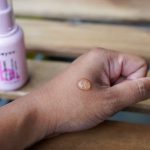When it comes to skincare, most conversations center around the face—think 10-step Korean routines, trendy serums, and sheet masks galore. But while the face gets all the spotlight, it only accounts for a small portion of your skin. The rest of your body—from your shoulders to your heels—often gets overlooked, despite playing a vital role in protecting you every day. Your skin is your body’s largest organ, and every inch of it deserves the same level of care and attention.
That’s where a full-body skincare routine comes in. It’s not about being high-maintenance or striving for perfection—it’s about showing respect for the skin that works hard for you. A thoughtful daily routine can help your body feel nourished, healthy, and radiant beyond just what’s seen in the mirror. When you commit to taking care of all your skin, you’re doing more than improving its appearance—you’re investing in your comfort, confidence, and overall well-being.
Why Full-Body Skincare Matters
Skin plays several vital roles that go far beyond appearance. It serves as a protective barrier against external threats, helps regulate body temperature, and acts as the first line of defense against harmful bacteria, pollutants, and environmental stressors. Despite its importance, skincare routines are often limited to the face, leaving the rest of the body vulnerable to dryness, irritation, and visible signs of aging. Areas like the hands, chest, and legs endure daily wear and tear, frequent sun exposure, and constant friction from clothing—yet they rarely receive the same level of attention.
When body care is neglected, it can lead to a range of common skin concerns such as keratosis pilaris (those stubborn little bumps on the arms), body acne, rough patches, uneven tone, and sun spots. The good news? Most of these issues can be managed—or even prevented entirely—with consistent, targeted skincare. Beyond the physical benefits, full-body care also contributes to mental wellness. Establishing a daily routine that includes your entire body reinforces self-respect and body positivity, creating a sense of connection and appreciation for yourself. In many ways, truly feeling good in your skin begins with the simple, intentional act of caring for it.
Understanding the Skin Below the Neck
- The skin on your body is not the same everywhere. It varies in thickness, sensitivity, oil production, and its response to external stressors. For instance, the skin on your back is thicker and has more sebaceous glands, making it more prone to acne. Meanwhile, your chest and neck are thinner and show signs of aging earlier.
- Hormonal fluctuations, friction from clothing, sun exposure, and shaving can all affect your body’s skin differently. These variables mean you can’t take a one-size-fits-all approach. Each area may require unique care depending on your lifestyle and skin type.
- Areas like your elbows, knees, and heels tend to be drier because they have fewer oil glands. In contrast, the underarms and groin are more prone to irritation and discoloration due to sweat, shaving, and tight clothing.
- Understanding your body’s skin allows you to tailor a more effective and personalized skincare routine. With proper knowledge, you can address specific issues and enhance your skin’s overall health and appearance.
Daily Full-Body Skincare Rituals
Cleansing
- Start with a gentle cleanser that removes dirt, sweat, and excess oil without stripping the skin. Harsh soaps can damage the skin’s natural moisture barrier and leave it feeling tight or itchy.
- Look for body washes that contain hydrating ingredients like glycerin, aloe vera, or oat extract. These help maintain softness and soothe the skin after a long day.
- For acne-prone areas such as the back or chest, consider a body cleanser with salicylic acid or tea tree oil. These ingredients help to keep pores clear and reduce inflammation.
- Exposure to overly hot water during showers may strip the skin of natural oils and compromise the moisture barrier. Lukewarm water helps preserve hydration levels and promotes healthier skin function.
Exfoliating
- Exfoliating removes dead skin cells, helps unclog pores, and allows moisturizers to absorb more effectively. It also improves skin texture and tone.
- Physical exfoliants, such as scrubs containing sugar, salt, or ground seeds, are most effective on rough areas like elbows, knees, and heels. These formulations help remove dead skin cells and improve texture in thicker, more resilient regions.
- Chemical exfoliants like glycolic acid, lactic acid, or urea are excellent for larger areas. These ingredients gently dissolve dead skin cells without physical abrasion.
- Limit exfoliation to two or three times a week. Over-exfoliating can lead to sensitivity, dryness, and irritation.
Moisturizing
- Moisturizing is the cornerstone of healthy skin. It locks in hydration, supports the skin’s protective barrier, and prevents dryness, cracking, and flaking.
- Choose lightweight, fast-absorbing lotions for daytime, especially in warmer weather. Look for hyaluronic acid and niacinamide for hydration and skin strengthening.
- At night or during winter, switch to thicker creams or oils. Ingredients like shea butter, squalane, and ceramides deeply nourish and repair the skin overnight.
- Applying moisturizer immediately after showering, while the skin remains slightly damp, enhances moisture retention. This practice helps seal hydration into the skin and supports a healthy barrier function.
Targeted Treatments for Specific Areas
Chest and Décolleté
- Frequent sun exposure on delicate skin increases the likelihood of developing wrinkles, sunspots, and sagging. Prolonged ultraviolet radiation accelerates the aging process and weakens the skin’s structural integrity.
- Use retinol or peptide-infused body lotions to firm the skin and reduce signs of aging.
- Apply sunscreen daily to this area, even if it is partially covered by clothing. Ultraviolet damage accumulates with time and leads to visible aging.
Back and Shoulders
- These areas are more prone to breakouts due to higher oil production and trapped sweat from tight clothing or backpacks.
- Use salicylic acid or benzoyl peroxide washes to cleanse the pores and reduce inflammation.
- Heavy moisturizers in this area can contribute to clogged pores and breakouts. Lightweight, non-comedogenic formulas are recommended to maintain hydration without causing congestion.
Arms and Legs
- These areas often show signs of dryness, rough texture, or keratosis pilaris. Regular exfoliation and hydration can greatly improve their appearance.
- Lactic acid and urea-based lotions effectively soften and smooth skin, particularly on areas with bumpy or flaky textures. These ingredients promote gentle exfoliation and improved hydration, enhancing overall skin texture.
- Dry brushing before your shower can stimulate circulation and enhance exfoliation when done gently and consistently. Arms and legs frequently exhibit dryness, rough texture, or keratosis pilaris. Regular exfoliation and hydration significantly improve overall skin texture and appearance. Lactic acid and urea-based lotions effectively soften and smooth the skin, particularly on areas with bumps or flakiness. Gentle, consistent dry brushing before bathing enhances exfoliation and supports healthy circulation.
Hands and Feet
- Constant use and frequent washing can dry out the skin on your hands, while your feet are prone to calluses and roughness.
- Exfoliate once a week and use thick creams daily. At night, apply a heavy layer of cream and wear cotton gloves or socks to lock in moisture.
- Always apply sunscreen on your hands during the day. They are constantly exposed to the sun and are one of the first areas to show signs of aging.
The Importance of Body Sunscreen
- Sunscreen is often applied to the face while the rest of the body is overlooked, although the skin on the rest of the body is equally vulnerable to sun damage, premature aging, and skin cancer.
- Broad-spectrum sunscreen with SPF 30 or higher should be applied daily to all exposed areas, including during cloudy weather or indoor exposure near windows, to protect against UV damage.
- Reapply every two hours if you’re spending time outdoors, swimming, or sweating.
- Popular application areas to remember include the neck, chest, arms, shoulders, hands, back of the neck, and tops of the feet.
- Opt for formulas that suit your lifestyle—sprays for quick application, gels for oily skin, and mineral options for sensitive skin.
Adjusting Your Routine with the Seasons
Spring and Autumn
- These transitional seasons require a balanced routine. Focus on soothing the skin and addressing any damage from the previous season.
- Use calming ingredients like aloe vera, chamomile, and oat to reduce sensitivity or post-winter irritation.
- Switch to lightweight moisturizers as the weather warms and humidity increases.
Summer
- The focus should be on sweat control, breakout prevention, and sun protection.
- Use lighter, oil-free moisturizers to prevent clogged pores.
- Cleanse more frequently to remove sweat, dirt, and sunscreen buildup.
- Never skip sunscreen, especially on high-exposure areas like shoulders, arms, and back.
Winter
- The cold, dry air can strip your skin of moisture. Hydration and protection are crucial.
- Use rich body creams or oils with ingredients like shea butter, jojoba oil, or lanolin.
- Indoor humidifiers help maintain optimal humidity levels, reducing skin dryness and supporting moisture retention in low-humidity environments.
- Shorter showers with lukewarm water help minimize moisture loss, while immediate post-shower moisturization enhances hydration retention and supports skin barrier function.
Skincare Tools That Enhance Your Routine
- Dry brushes are excellent for pre-shower exfoliation and boosting lymphatic drainage. Use light, circular motions starting from your feet upward.
- Exfoliating mitts or gloves offer a simple, effective way to exfoliate the entire body in the shower.
- Silicone body scrubbers offer a more hygienic alternative to traditional loofahs, with a non-porous surface that resists bacterial buildup. Their soft texture makes them suitable for cleansing sensitive or easily irritated skin.
- Gua sha tools and massage rollers assist in relieving muscle tension, enhancing circulation, and supporting lymphatic drainage. When used after applying body oil or lotion, they glide smoothly over the skin to maximize these benefits.
- Foot and hand masks deliver intensive hydration. Use them weekly for soft, refreshed skin.
Skincare as a Form of Self-Care
- Body skincare rituals are an opportunity to slow down, connect with yourself, and establish intentional moments of self-love.
- Massaging lotion into the skin promotes relaxation, reduces stress, and enhances body positivity.
- A full-body skincare routine reinforces the belief that your entire body is worthy of attention and care—not just the parts the world sees.
- Creating a relaxing environment for your body routine—like dimming the lights, playing soft music, or lighting a candle—can make it feel like a mini spa experience.
How to Build a Custom Full-Body Skincare Routine
- A morning routine can be simple. Start with a gentle cleanse, followed by a lightweight moisturizer with SPF. Add targeted treatments as needed.
- An evening routine allows for richer hydration and exfoliation. Cleanse the skin thoroughly, apply a body serum or exfoliant two to three times per week, and finish with a deeply nourishing cream or oil.
- Use the same principles as your facial routine: cleanse, treat, and protect. Just adjust based on your skin type and lifestyle.
- Begin with three essential products: a good body cleanser, a daily moisturizer, and sunscreen.
Common Myths About Body Skincare
- Myth: Facial products are better, so using them on the body is fine.
- Truth: Facial products are formulated for thinner skin and small areas. Body skin may need stronger or more emollient ingredients in larger quantities.
- Myth: Only people with dry skin need to moisturize.
- Truth: Every skin type benefits from hydration. Even oily or acne-prone skin can become dehydrated and irritated without a good moisturizer.
- Myth: Body skincare is too expensive.
- Truth: There are plenty of affordable body care products that offer excellent results. A consistent routine is more effective than high-end products used sporadically.
- Myth: Sunscreen is only needed during summer or at the beach.
- Truth: UV rays are present year-round and can penetrate windows. Daily protection is essential to prevent aging and long-term damage.
True Glow Starts with Full-Body Self-Care
The skin, being the body’s largest and most visible organ, serves as a constant shield against external elements and deserves consistent care to stay healthy. Full-body skincare isn’t just about aesthetics—it’s a reflection of self-respect and appreciation, supporting not only your appearance but also your overall well-being and confidence. When you give your entire body the same level of attention as your face, you’re embracing a more holistic and empowering form of self-care. After all, glowing skin shouldn’t end at your jawline; with the right routine and a bit of consistency, your whole body can radiate the same healthy, confident glow.



